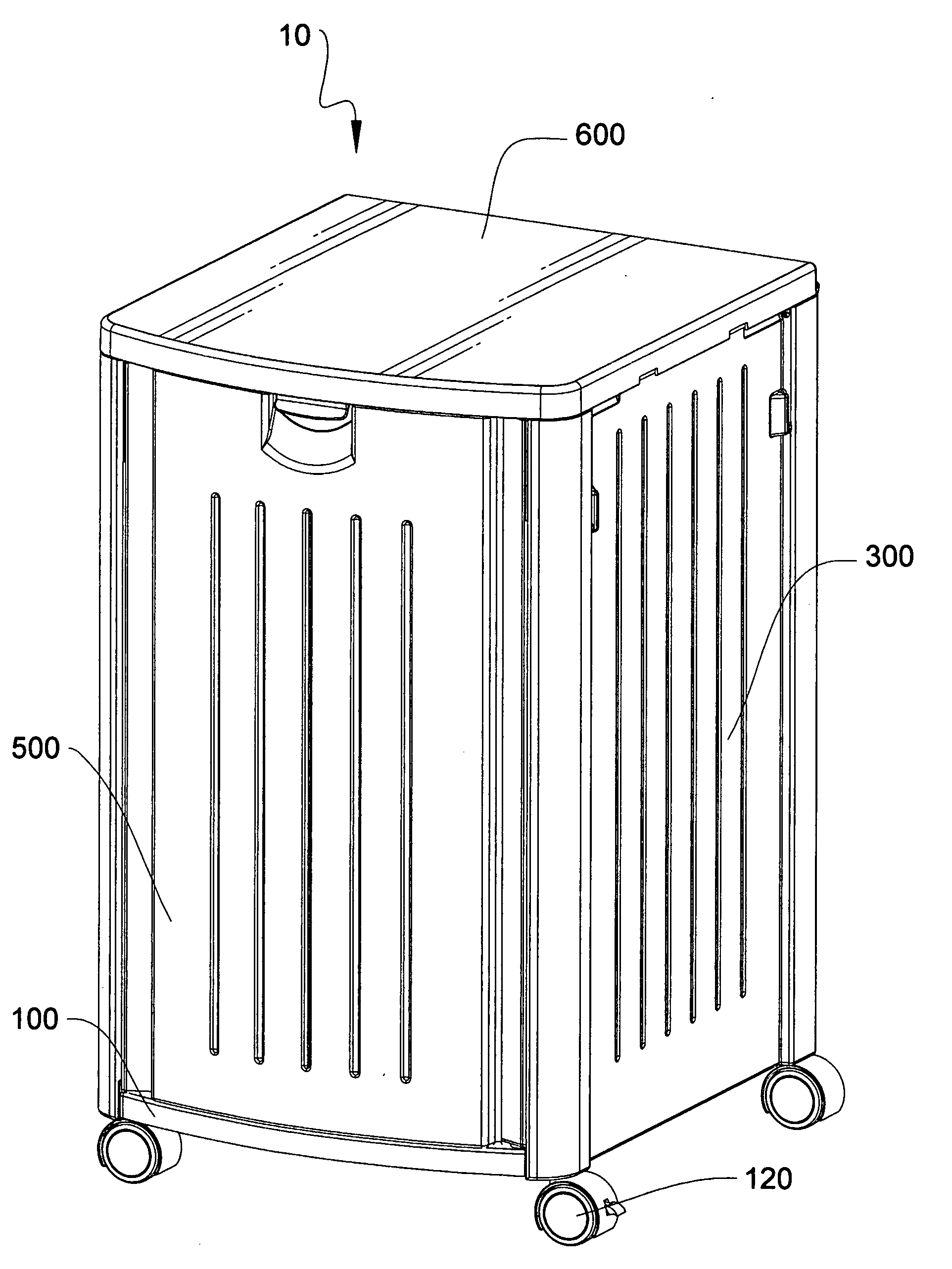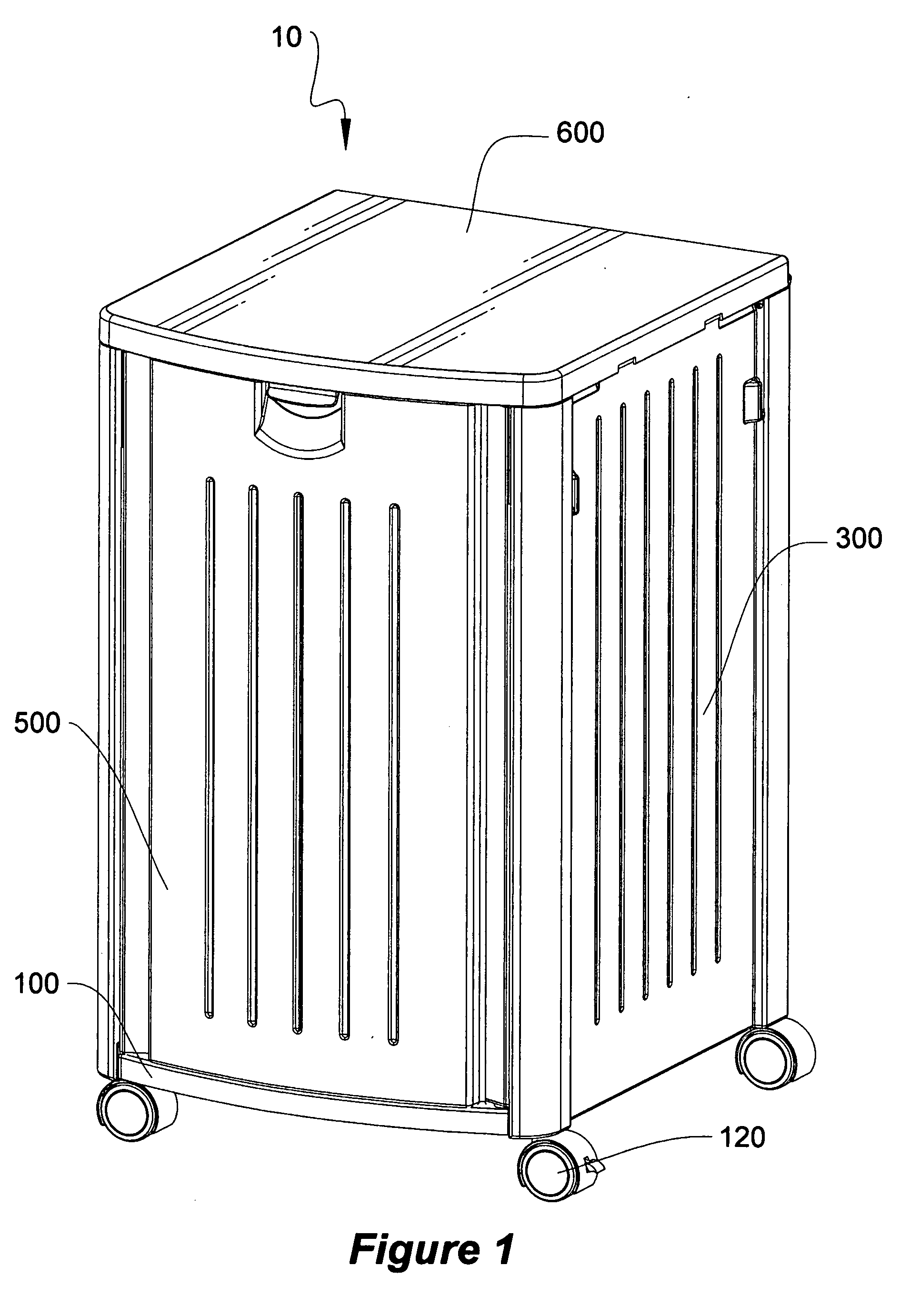Trash container assembly
- Summary
- Abstract
- Description
- Claims
- Application Information
AI Technical Summary
Benefits of technology
Problems solved by technology
Method used
Image
Examples
Embodiment Construction
[0038] While the present invention is susceptible of embodiment in various forms, there is shown in the drawings and will hereinafter be described a presently preferred embodiment with the understanding that the present disclosure is to be considered an exemplification of the invention and is not intended to limit the invention to the specific embodiments illustrated.
[0039]FIGS. 1-2 which are now referenced illustrate perspective and exploded views of the trash container assembly, generally referenced as 10, according to a preferred embodiment of the present invention. The trash container is made up of a base panel 100, left side wall panel 200, right side wall panel 300, back wall panel 400, front wall panel 500 and cover panel 600. In the preferred embodiment the panels comprising the assembly are formed of but not limited to a suitable plastic such as polystyrene, polypropylene or polyethylene, through the process of injection molding. The result is that the panels comprising th...
PUM
 Login to View More
Login to View More Abstract
Description
Claims
Application Information
 Login to View More
Login to View More - R&D
- Intellectual Property
- Life Sciences
- Materials
- Tech Scout
- Unparalleled Data Quality
- Higher Quality Content
- 60% Fewer Hallucinations
Browse by: Latest US Patents, China's latest patents, Technical Efficacy Thesaurus, Application Domain, Technology Topic, Popular Technical Reports.
© 2025 PatSnap. All rights reserved.Legal|Privacy policy|Modern Slavery Act Transparency Statement|Sitemap|About US| Contact US: help@patsnap.com



